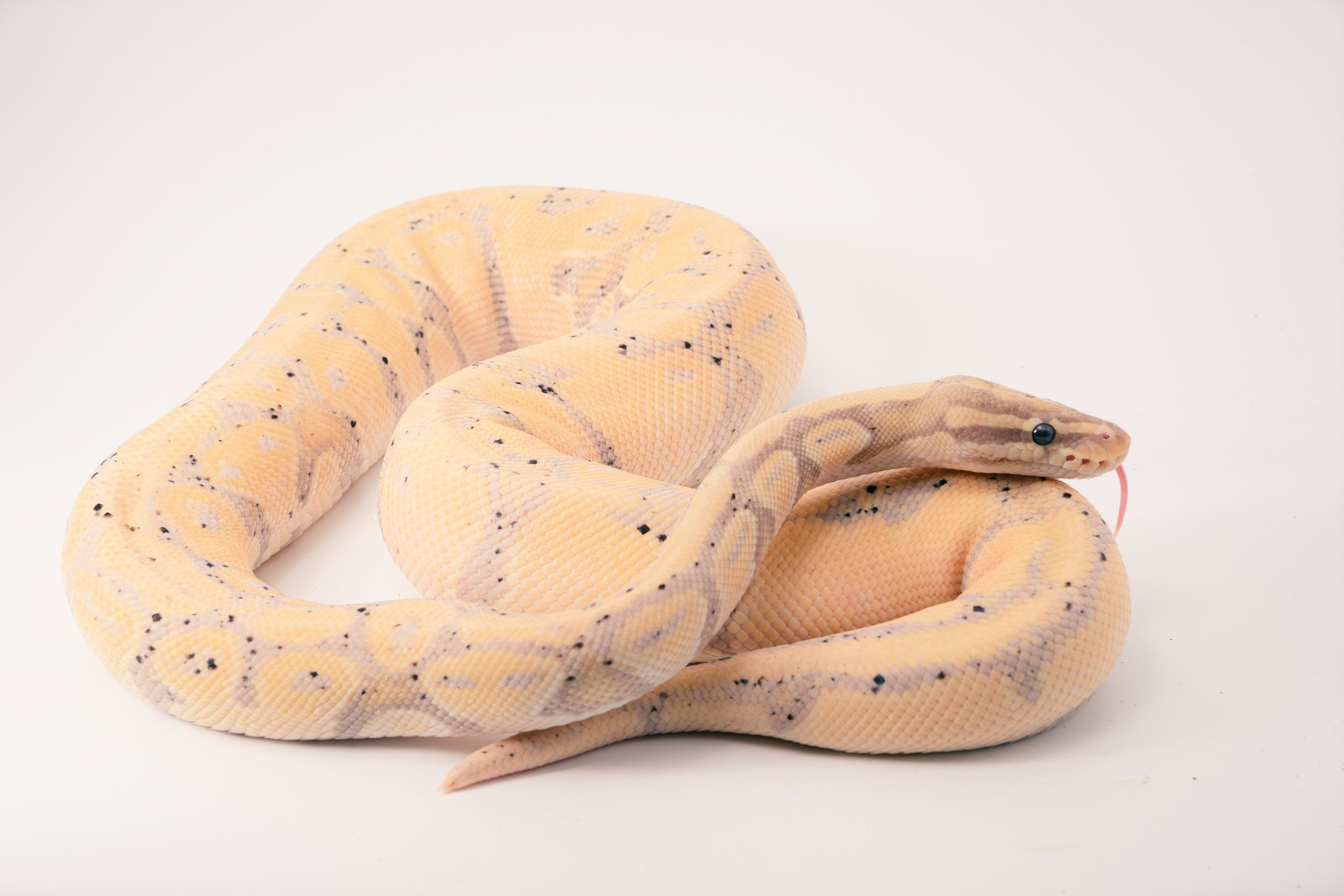When we think of frightened animals, we often imagine loud vocalizations – a dog’s bark, a cat’s hiss, or a bird’s alarm call. Snakes, however, have evolved an entirely different repertoire of fear responses, largely silent yet remarkably expressive. These limbless reptiles, often misunderstood and feared themselves, communicate their distress through a fascinating array of physical behaviors and subtle body language. Without vocal cords to scream or facial muscles to grimace, snakes have developed specialized methods to signal when they feel threatened. Understanding these silent signals not only helps in safer human-snake interactions but also provides insight into the complex emotional lives of these ancient creatures.
Body Posturing and Defensive Stances
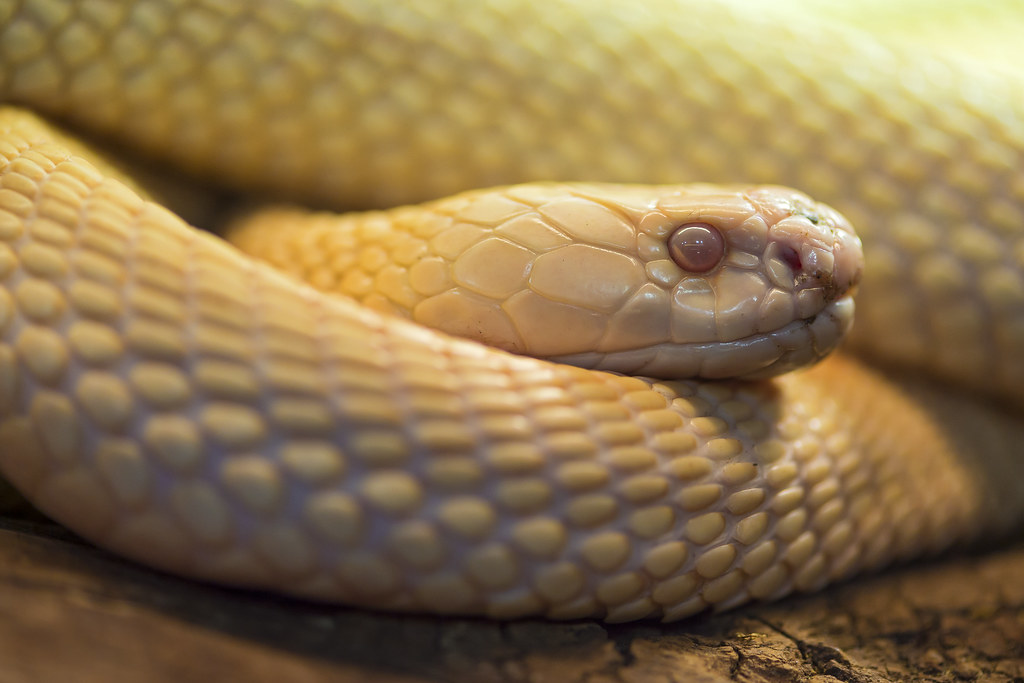
One of the most immediate ways snakes express fear is through changes in body posture. When threatened, many species will flatten their bodies to appear larger and more intimidating to potential predators. This technique, particularly prominent in cobras and certain vipers, increases the snake’s visual profile significantly. Some species like the eastern hognose snake will spread their neck ribs outward, creating a cobra-like hood even though they aren’t related to cobras at all. This dramatic transformation from a slender tube to a wider, more imposing shape is a clear signal that the snake feels cornered and afraid. The body posturing serves a dual purpose – it makes the snake look more dangerous while also preparing it physically for a potential defensive strike if needed.
Coiling and Striking Positions

When seriously threatened, most snakes will coil their bodies into a tight defensive position with their head at the center. This S-shaped coil allows the snake to launch a defensive strike if necessary while protecting its vulnerable body parts. The coiled position is essentially the snake’s way of “loading a spring” – storing potential energy that can be released in a fraction of a second if the threat persists. Species like rattlesnakes are particularly known for this behavior, creating a compact coil with their rattle raised as a warning. The tightness of the coil and the height at which the head is held can indicate the snake’s level of fear – a loosely coiled snake might be mildly concerned, while a tightly wound snake with repeated striking motions is experiencing extreme distress. These positions are purely defensive rather than aggressive, as most snakes would prefer to escape rather than engage in conflict.
Tail Displays and Vibrations
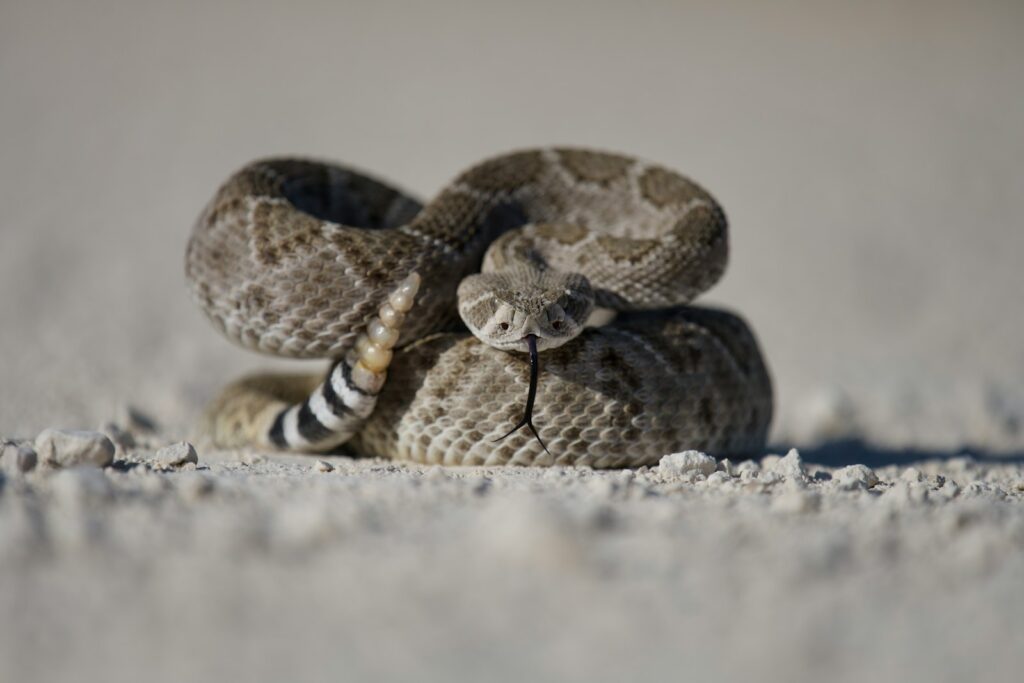
Many snakes utilize their tails as remarkable communication tools when frightened. The most famous example is the rattlesnake, which rapidly vibrates specialized loosely connected scales at its tail tip to create its distinctive warning sound. However, numerous non-venomous species like rat snakes, kingsnakes, and even some boas will mimic this behavior by vibrating their tails against dry leaves or the ground when threatened, creating a buzzing sound that mimics their venomous counterparts. Some species, like the pygmy rattlesnake, may keep their tail raised and vibrating while keeping the rest of their body motionless, focusing the predator’s attention on their tail rather than their vulnerable head. These tail displays represent an interesting evolutionary convergence where different snake species independently developed similar behaviors to express fear and deter predators without physical confrontation.
Puffing and Inflation Behaviors
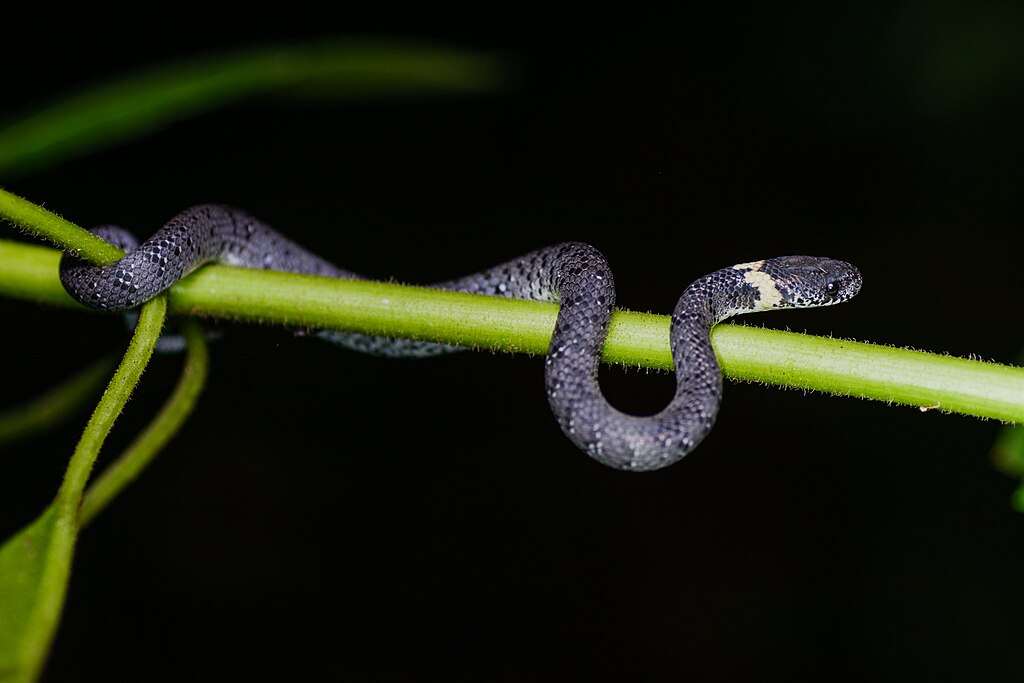
When confronted with danger, many snake species will dramatically inflate their bodies by taking in large amounts of air. This behavior serves multiple defensive purposes related to the snake’s fear response. By expanding their lung capacity and holding their breath, snakes can appear much larger and more intimidating to potential predators. Some species, like puff adders, are named specifically for this characteristic defensive behavior. Certain colubrids, including gopher snakes, will not only inflate but also exhale forcefully, creating a loud hissing sound that enhances their fearsome appearance. The hognose snake takes this behavior to an extreme, puffing up not just its body but also flattening its head to appear more triangular and viper-like when frightened. These inflation techniques represent ingenious ways that snakes have evolved to appear more dangerous than they actually are when experiencing fear.
Color Changes and Visual Signals
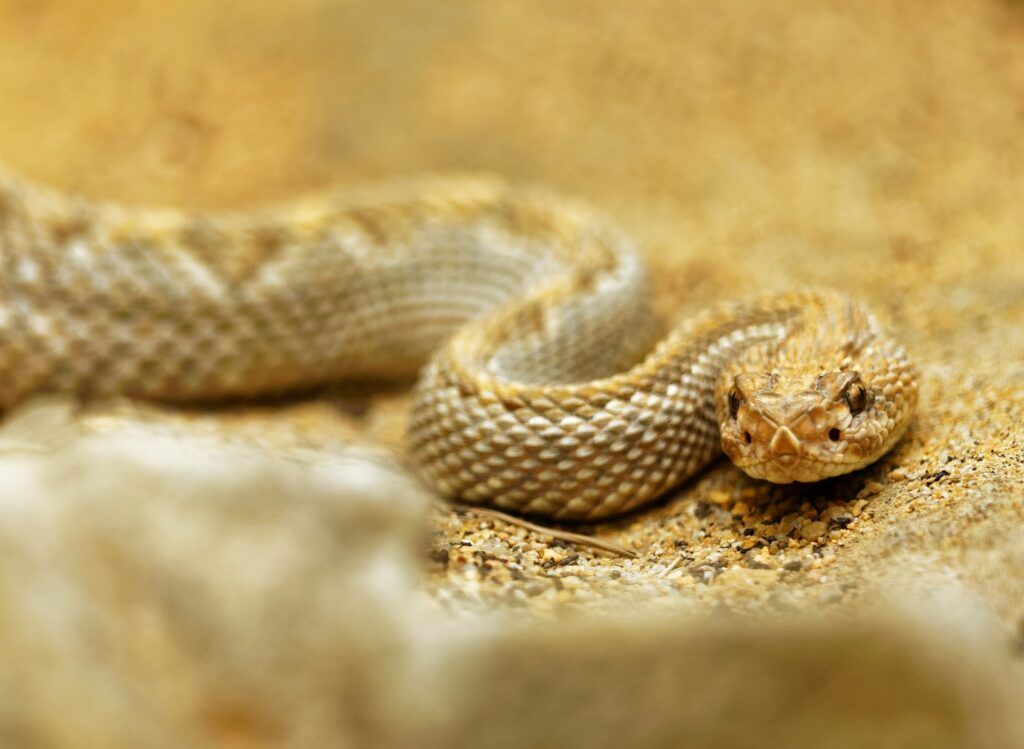
While not as dramatic as a chameleon’s transformations, some snakes can subtly alter their appearance when frightened through blood flow changes and muscle contractions. The cottonmouth, for instance, derives its name from the stark white lining of its mouth, which it displays when threatened by gaping widely. This creates a high-contrast visual signal that warns potential predators. Other species, particularly those with complex patterns, may appear to change color intensity as they inflate their bodies, stretching the skin and altering how their scales reflect light. The eastern hognose snake can darken its head region when threatened, creating more contrast with its body. Some species like certain kingsnakes have evolved high-contrast banding patterns that become more prominent when the snake is frightened and tenses its muscles, creating a confusing visual effect that may momentarily disorient predators and buy the snake precious seconds to escape.
Musking and Scent Release
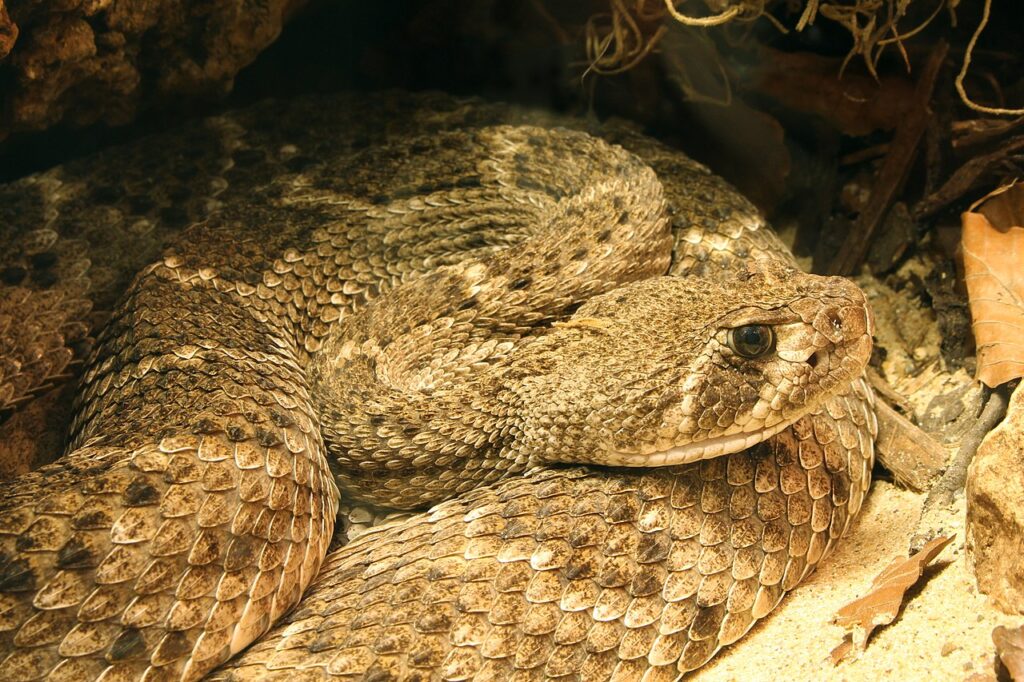
When particularly frightened, many snake species resort to chemical warfare through the release of foul-smelling secretions commonly called “musk.” This defensive substance is produced by specialized glands near the snake’s cloaca and can be forcefully expelled when the animal feels threatened. The musk varies in composition between species but typically contains compounds like amines and sulfur-containing chemicals that produce an extremely unpleasant odor. Garter snakes are particularly notorious for this behavior, producing a smell that can linger on handlers for days despite repeated washing. Beyond just being undesirable, this musk may serve multiple purposes in the snake’s fear response – it may make the snake taste bad to predators, act as an irritant, or simply serve as a distraction during the snake’s escape attempt. Some predators learn to associate this distinct odor with a difficult meal and may choose to pursue easier prey instead.
Playing Dead (Thanatosis)
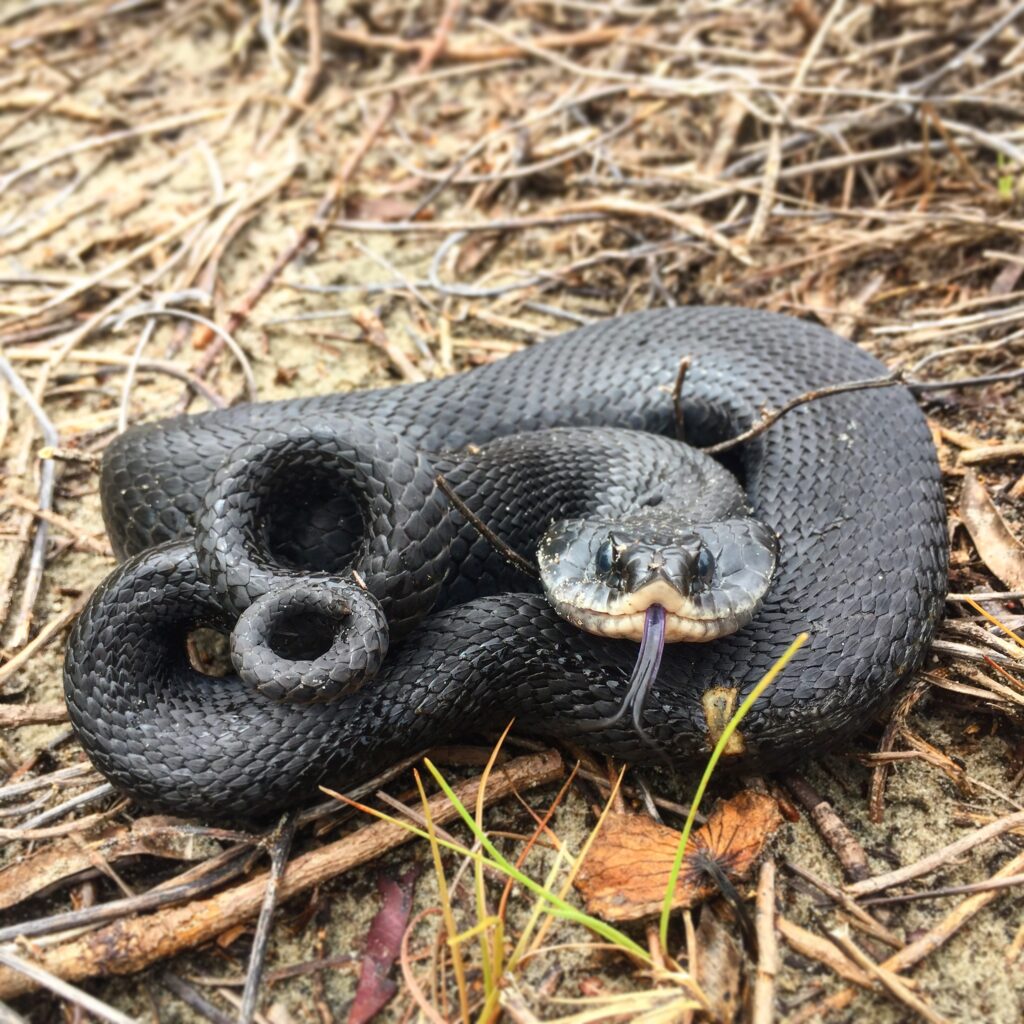
Perhaps the most dramatic fear response in the snake world is thanatosis – the practice of feigning death when extremely frightened. The eastern hognose snake is the master of this behavior, rolling onto its back with mouth agape and tongue hanging out, sometimes even leaking blood from its mouth for added effect. This remarkable performance goes beyond simple immobility; the snake will release musk and may even undergo temporary paralysis as part of this extreme fear response. If flipped right-side up during this display, a committed hognose will immediately roll back onto its back, demonstrating the intentional nature of this behavior. The evolutionary logic behind playing dead is sound – many predators are triggered to hunt by movement and lose interest in prey that appears to be already dead or decaying. Additionally, some predators may be wary of carrion due to potential disease, making this an effective last-resort defense mechanism for a snake experiencing extreme fear.
Head Flattening and Triangulation
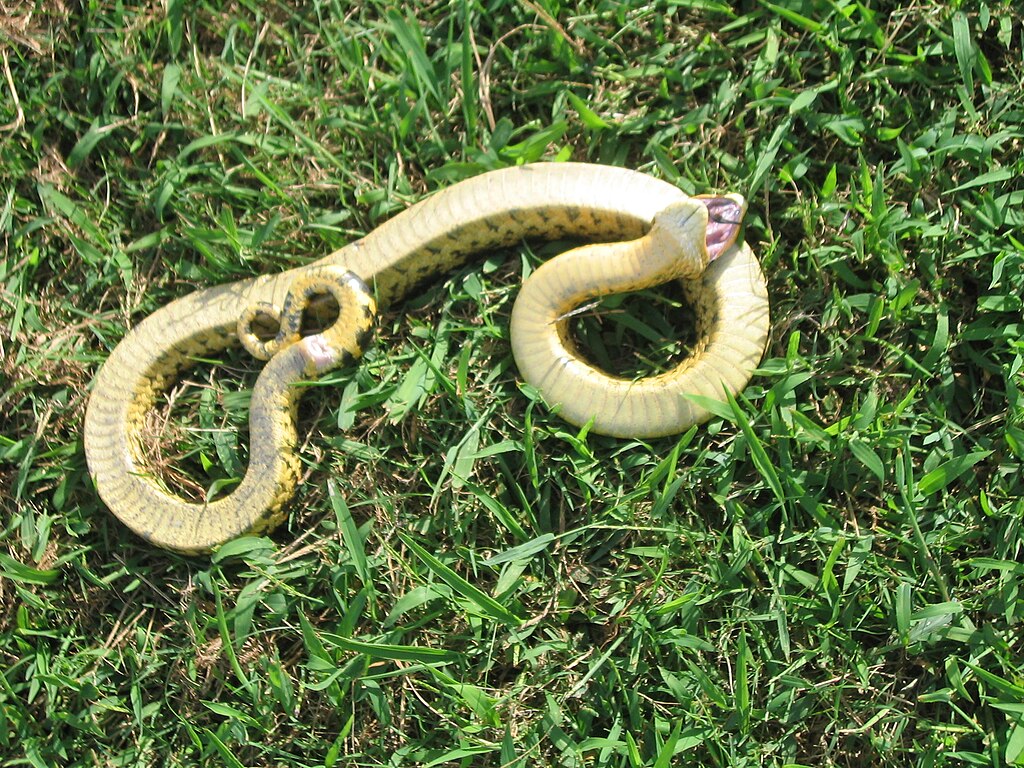
When frightened, many non-venomous colubrids will dramatically alter their head shape as part of their defensive display. Species like water snakes, rat snakes, and hognose snakes can flatten their heads into a triangular shape, mimicking the distinct head profile of venomous vipers. This remarkable transformation is achieved through spreading the quadrate bones at the back of their jaw and positioning their head at a specific angle. The visual effect can be so convincing that even experienced herpetologists might hesitate momentarily. This head-flattening behavior is purely a fear response and completely reversible – the snake returns to its normal head shape once it no longer feels threatened. The mimicry of venomous species represents an evolutionary adaptation called Batesian mimicry, where harmless species evolve to resemble dangerous ones to deter predators through deception rather than actual defense capabilities.
Freezing and Immobility
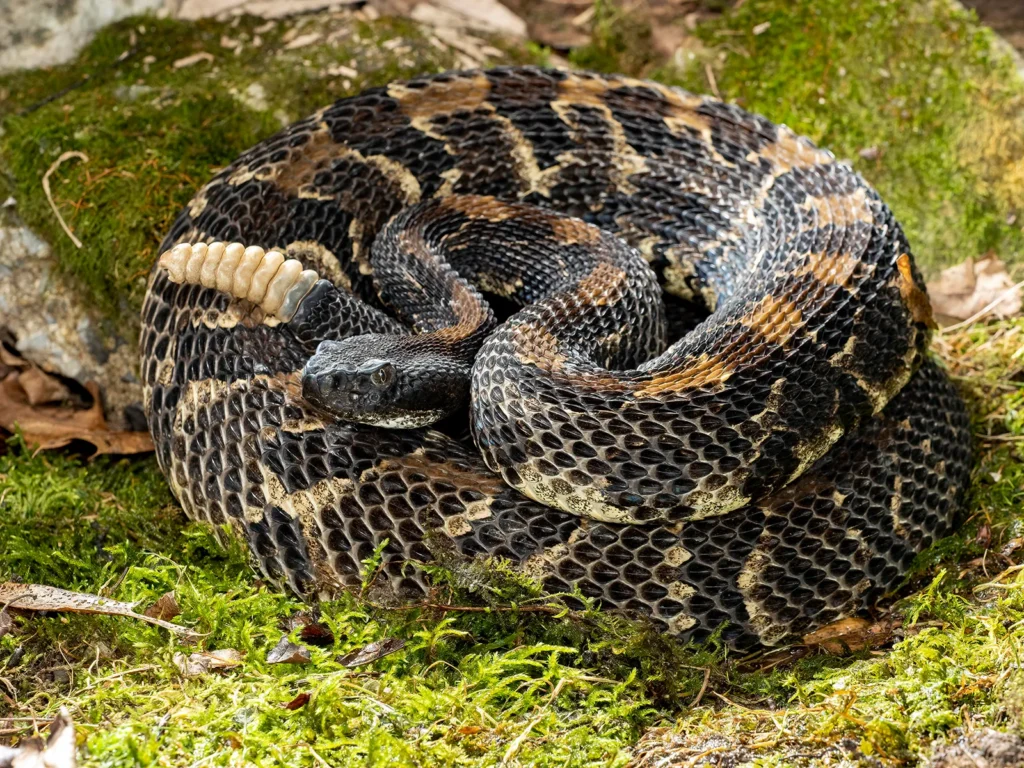
Sometimes a snake’s fear response isn’t about dramatic displays but rather about becoming nearly invisible through complete stillness. Many species, particularly the more cryptic ones like copperheads and gaboon vipers, will freeze completely when they detect a potential threat nearby. This immobility, combined with their exceptional camouflage, makes them nearly impossible to spot in their natural habitat. The freeze response in snakes involves a complete cessation of all movement, sometimes even holding their breath to avoid any detectable motion. This behavior is particularly effective against predators that hunt primarily by detecting movement, such as birds of prey. For arboreal species like vine snakes, freezing may involve holding an unusual position for extended periods, often resembling a twig or vine to avoid detection. This response represents a passive fear strategy where the snake essentially gambles that remaining undetected is safer than fleeing and potentially drawing attention to itself.
Regurgitation and Vomiting
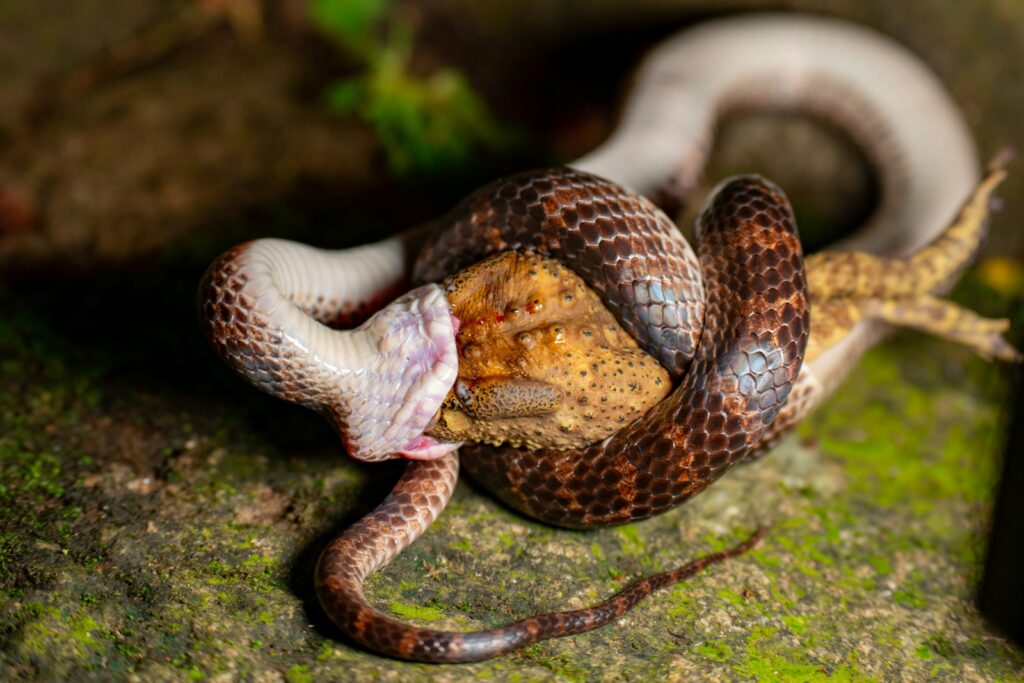
In extreme fear situations, particularly when physically handled, some snakes will regurgitate their most recent meal as a desperate defensive measure. This dramatic response serves multiple purposes in the snake’s fear-based defensive arsenal. First, it immediately makes the snake lighter and more capable of rapid escape once released. Second, the sight and smell of partially digested prey can distract or repulse the predator, creating an opportunity for escape. Snake species like kingsnakes and rat snakes are particularly known for this behavior when handled roughly soon after feeding. The physiological stress of fear can actually shut down a snake’s digestive system temporarily, making it impossible for them to process food while in a state of extreme fear properly. For this reason, responsible snake keepers typically wait several days after feeding before handling their pets, as forced regurgitation can be physically harmful to the snake and represents a significant stress response.
Escape Behaviors and Speed Bursts

While not always recognized as a fear response, a snake’s primary reaction to threat is typically rapid escape rather than confrontation. When frightened, most snakes will attempt to flee before resorting to defensive displays or strikes. This escape behavior often involves surprising bursts of speed that many people don’t associate with snakes. Species like racers and whipsnakes can move at impressive speeds of over 8 miles per hour in short bursts when truly frightened. Arboreal species might rapidly ascend trees or drop from branches to escape, while burrowing species may quickly disappear into soil or leaf litter. Some water snakes can remain submerged for extended periods when frightened, using aquatic environments as refuge. These flight responses represent the snake’s preferred strategy when afraid, with the more dramatic defensive displays typically emerging only when escape routes are blocked and the snake feels cornered.
Recognition of Snake Fear Signals by Other Animals
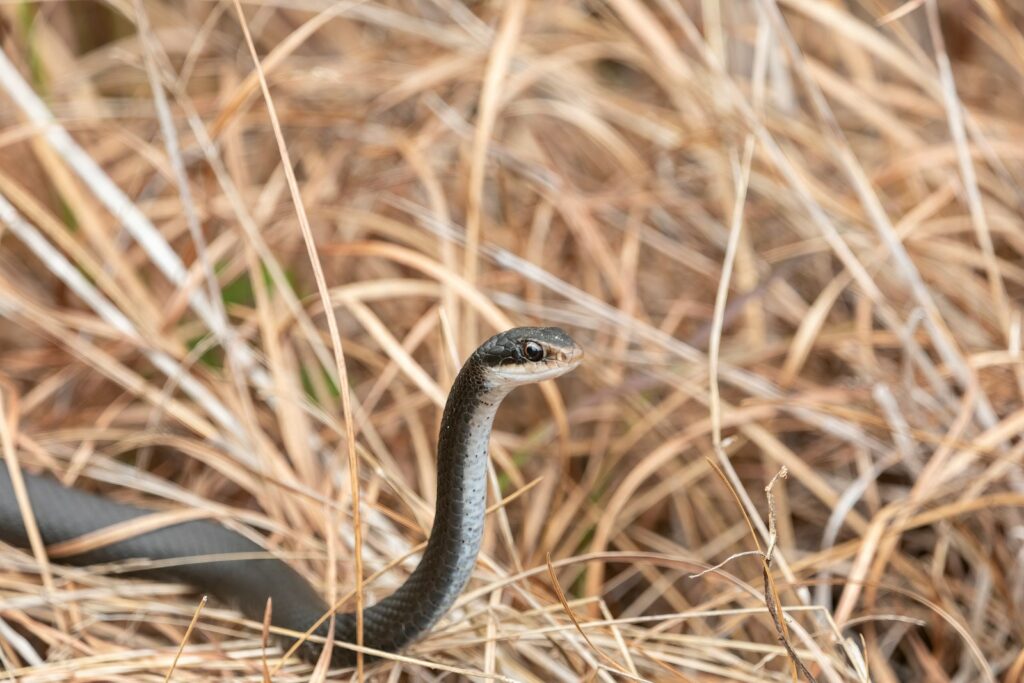
The silent fear signals of snakes have not gone unnoticed in the natural world, as many animals have evolved to recognize these specific behaviors as warnings. Certain predator species like mongooses and hawks have developed specialized neural circuits that can rapidly identify snake defensive postures, triggering appropriate caution or specialized hunting strategies. Prey animals like rodents and birds show innate recognition of snake defensive displays, often responding with alarm calls that alert others to the potential danger. Even other reptiles seem capable of recognizing when a snake is displaying fear-based defensive behaviors and may adjust their own behavior accordingly. Perhaps most interestingly, there’s evidence that some snake species themselves recognize the defensive displays of other snake species, suggesting a complex interspecies visual language of threat and fear communication. This widespread recognition of snake fear signals across the animal kingdom highlights the evolutionary importance and effectiveness of these silent communication methods.
Human Misinterpretation of Snake Fear Responses
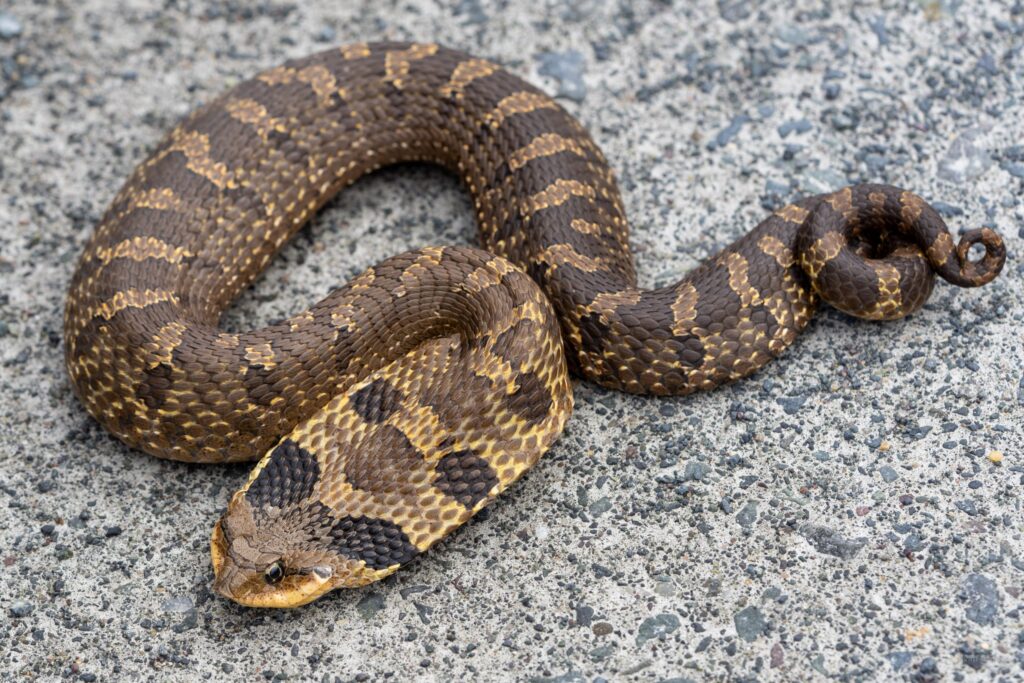
One of the greatest challenges in human-snake interactions is our tendency to misinterpret a snake’s fear responses as aggression or unprovoked attacks. When a snake coils, hisses, or strikes, it is almost invariably acting out of fear rather than malice or hunger. These defensive behaviors are last-resort strategies employed when the snake feels cornered and unable to escape. Unfortunately, human instinctive reactions to these displays often escalate the situation, with sudden movements or attempts to kill the snake resulting in bites that could have been avoided with proper understanding. Conservation efforts are increasingly focused on educating the public about how to correctly interpret snake body language, recognizing fear responses for what they are rather than attributing them to aggression. Learning to identify when a snake is frightened allows humans to give the animal space to calm down and retreat, resulting in safer outcomes for both species. The vast majority of snake bites occur when humans attempt to handle, harass, or kill snakes that are simply trying to defend themselves from a perceived existential threat.
Understanding how snakes express fear without vocalizations provides a fascinating window into the complex world of reptile communication. From dramatic physical displays like hood spreading and body inflation to subtle strategies like freezing or fleeing, snakes have evolved a diverse repertoire of silent signals that communicate their emotional state effectively. These behaviors not only help snakes navigate dangerous encounters in the wild but also offer valuable information for humans who encounter these remarkable reptiles. By learning to recognize and respect these fear responses, we can foster more peaceful coexistence with these important and often misunderstood members of our ecosystems. The next time you encounter a snake displaying defensive behavior, remember that you’re witnessing not aggression but fear – a universal emotion that connects us with all living creatures, even those who express it without making a sound.

